1-(4-Methylphenyl)ethanol
Synonym(s):4,α-Dimethylbenzyl alcohol;Methyl p-tolyl carbinol
- CAS NO.:536-50-5
- Empirical Formula: C9H12O
- Molecular Weight: 136.19
- MDL number: MFCD00016860
- EINECS: 208-637-8
- SAFETY DATA SHEET (SDS)
- Update Date: 2025-01-27 09:38:02
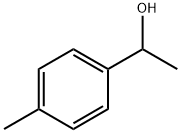
What is 1-(4-Methylphenyl)ethanol?
Chemical properties
CLEAR COLOURLESS LIQUID
Chemical properties
p-α-Dimethylbenzyl alcohol has an odor reminiscent of menthol.
Occurrence
Reported found as a constituent in the essential oil of Curcuma longa L. and related species (Zingiberaceae); the product obtained from natural sources is probably levorotatory.
The Uses of 1-(4-Methylphenyl)ethanol
1-(4-Methylphenyl)ethanol serves as a component of the essential oil from some plants in the ginger family. It is also used as a flavoring agent.
Preparation
From p-tolymagnesium bromide and acetaldehyde in ether; from 4-methylaceto-phenone with sodium metal in ethanol
Definition
ChEBI: 1-(4-Methylphenyl)ethanol is a member of toluenes.
Properties of 1-(4-Methylphenyl)ethanol
| Boiling point: | 218-220 °C(lit.) |
| Density | 0.987 g/mL at 20 °C(lit.) |
| refractive index | n |
| FEMA | 3139 | P-ALPHA-DIMETHYLBENZYL ALCOHOL |
| Flash point: | 102 °C |
| storage temp. | Sealed in dry,Room Temperature |
| form | clear liquid |
| pka | 14.56±0.20(Predicted) |
| color | Colorless to Almost colorless |
| Odor | at 100.00 %. sweet hawthorn floral nutty powdery |
| Water Solubility | slightly soluble |
| JECFA Number | 805 |
| Merck | 14,3237 |
| BRN | 1857562 |
| CAS DataBase Reference | 536-50-5(CAS DataBase Reference) |
| NIST Chemistry Reference | Benzenemethanol, «alpha»,4-dimethyl-(536-50-5) |
| EPA Substance Registry System | Benzenemethanol, .alpha.,4-dimethyl- (536-50-5) |
Safety information for 1-(4-Methylphenyl)ethanol
| Signal word | Warning |
| Pictogram(s) |
 Exclamation Mark Irritant GHS07 |
| GHS Hazard Statements |
H302:Acute toxicity,oral H315:Skin corrosion/irritation H319:Serious eye damage/eye irritation H335:Specific target organ toxicity, single exposure;Respiratory tract irritation |
| Precautionary Statement Codes |
P261:Avoid breathing dust/fume/gas/mist/vapours/spray. P301+P312:IF SWALLOWED: call a POISON CENTER or doctor/physician IF you feel unwell. P302+P352:IF ON SKIN: wash with plenty of soap and water. P304+P340:IF INHALED: Remove victim to fresh air and Keep at rest in a position comfortable for breathing. P305+P351+P338:IF IN EYES: Rinse cautiously with water for several minutes. Remove contact lenses, if present and easy to do. Continuerinsing. |
Computed Descriptors for 1-(4-Methylphenyl)ethanol
New Products
Indole Methyl Resin tert-butyl 9-methoxy-3-azaspiro[5.5]undecane-3-carboxylate Boc-His(Boc)-OH 2-CTC Resin 4-Chloro-7-tosy1-7Hpyrrolo[2,3-d]pyrimidine 5,7-Dibromo-1H-indole 2,5-dichloro-N-hydroxy-4,6-dimethylpyridine-3-carboximidamide 2,2-Dimethoxy-7-azaspiro[3.5]nonane hydrochloride 4-chloromethyl-5-methyl-1,3-dioxol-2-one (DMDO-Cl) R-2-BENZYLOXY PROPIONIC ACID 1,1’-CARBONYLDIIMIDAZOLE 1,1’-CARBONYLDI (1,2-4 TRIAZOLE) N-METHYL INDAZOLE-3-CARBOXYLIC ACID 4-((2-hydroxyethyl)thio)benzoic acid 1-(TERT-BUTOXYCARBONYL)-2-PYRROLIDINONE Methyl 6-methylnicotinate 3-Pyridineacrylic acid tert-Butyl carbazate TETRAHYDRO-2H-PYRAN-3-OL 2-((4-morpholinophenylamino) (methylthio) methylene) malononitrile 3-(4-morpholinophenylamino)-5-amino-1H-pyrazole-4-carbonitrile 2,4-dihydroxybenzaldehyde 1,3-Diethyl-1,3-Diphenylurea Methyl 2-methylquinoline-6-carboxylateRelated products of tetrahydrofuran
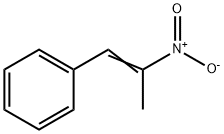




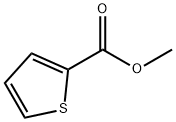
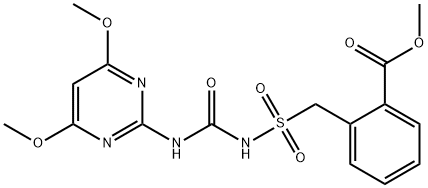
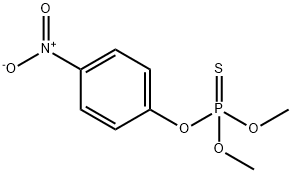
You may like
-
 1-(p-Tolyl)ethanol CAS 536-50-5View Details
1-(p-Tolyl)ethanol CAS 536-50-5View Details
536-50-5 -
 Pyridine 99.5% HPLC /UV SpectroscopyView Details
Pyridine 99.5% HPLC /UV SpectroscopyView Details
110-86-1 -
 Guanine , 99%View Details
Guanine , 99%View Details
73-40-5 -
 Piperazine Spot supply, best priceView Details
Piperazine Spot supply, best priceView Details
110-85-0 -
 Dibutyl PhthalateView Details
Dibutyl PhthalateView Details
84-74-2 -
 Imidazole Spot supply, competitive priceView Details
Imidazole Spot supply, competitive priceView Details
288-32-4 -
 Octadecyl 3-(3,5-di-tert-butyl-4-hydroxyphenyl)propionate 98% (GC)View Details
Octadecyl 3-(3,5-di-tert-butyl-4-hydroxyphenyl)propionate 98% (GC)View Details
2082-79-3 -
 Thiourea 99% ARView Details
Thiourea 99% ARView Details
62-56-6
Statement: All products displayed on this website are only used for non medical purposes such as industrial applications or scientific research, and cannot be used for clinical diagnosis or treatment of humans or animals. They are not medicinal or edible.
